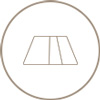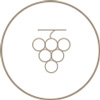
Château Montlabert
Château Montlabert plays on elegance rather than power. Throughout this complex and precise score that the blending work represents, the characteristic notes of the Cabernet Franc and Merlot gracefully intertwine. The most iconic vintages, 2012, 2015, 2016, show a refined structure, a controlled natural acidity, a lovely texture on the mid-palate, an aromatic and tannic elegance. In these wines, the Merlot often reveals an almost Pomerolian softness, its roots drawing deep down into the veins of blue clay.
94
Jane Anson
2022
97
Decanter
2016
93-94
James Suckling
2022
94
James Suckling
2016












